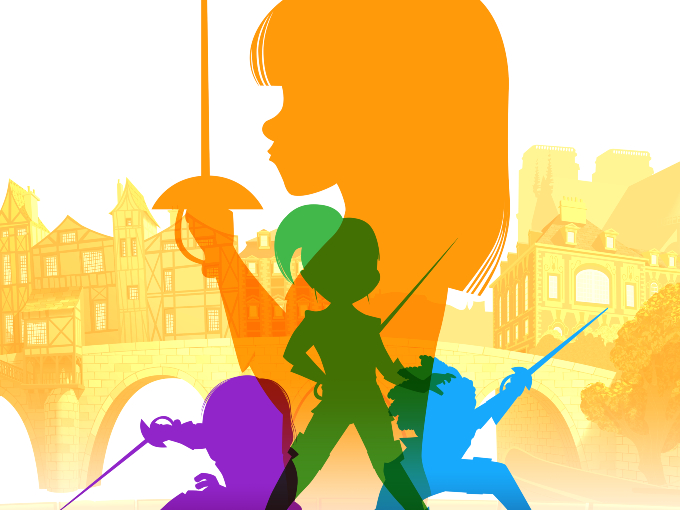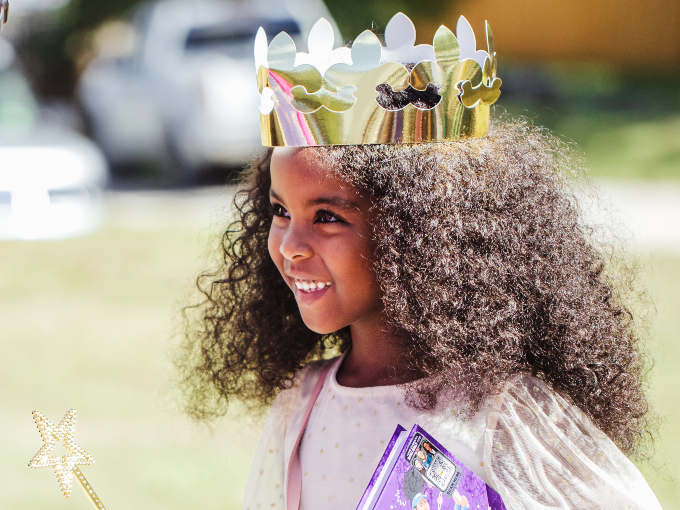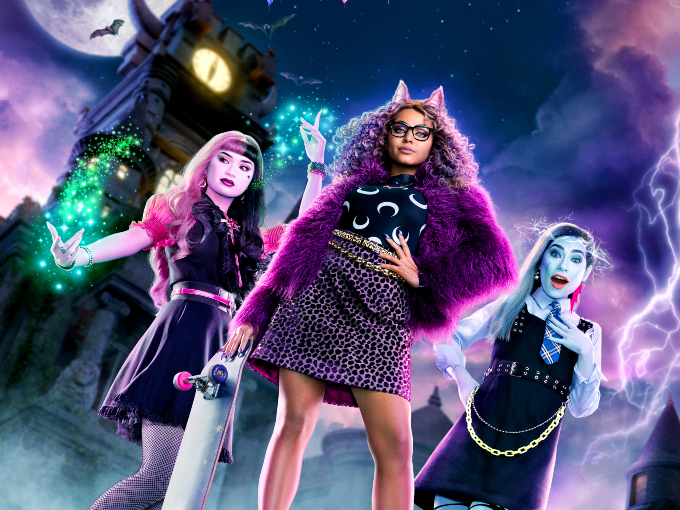In a world that’s been trending away from binary codes, where does girl-centric content fit in?
The world has changed a lot in the past decade, creating a schism between adults and kids when it comes to perceptions of gender. Insights agency Beano Brain surveyed more than 2,000 Gen Alpha kids (born from 2010 on) and their parents in 2019, and found that 58% of this demo feels that gender doesn’t matter, compared to 32% of their parents.
This is creating a growing challenge for kids producers who have relied on traditionally gendered content to shape concepts in the past, says Laura Macdonald, chief growth officer at research firm Hotwire Global. “Gen Alpha is growing up in a much more diverse world compared to their parents and grandparents, leading them to be a much more diverse group, with views not fitting into simple groups [such as] gender.”
The shift was not lost on toy giant Mattel, which has undergone a significant evolution in this area. Case in point: The relaunch of Monster High last year was updated for TV and film with a more diversified cast—including an Afro-Latina lead, a non-binary main character and monsters with disabilities—and a more equitable male-to-female character ratio.
Kids today are aging into more enlightened content, says Mattel Television’s SVP of creative, Christopher Keenan. “Most preschool content [appeals to] the entire preschool audience, regardless of a lead character’s gender, and this segment sets the expectations for the audience as they move on to older programming.”
Today, the idea of certain genres/tropes only appealing to a specific gender is no longer restricting producers—a dramatic shift from the days of “boys = action” and “girls = fantasy,” he adds. And it can pay off handsomely. Monster High became the number-one kids and family movie on Paramount+ soon after it launched in October 2022, reaching four million viewers in its premiere weekend.
Girls just wanna have range
According to Paramount UK general manager Louise Bucknole, programming should embody two distinct and equally important forms—equality in terms of diverse representation of genders, but also equity, meaning that all genders see elements of the lives that feel unique to them reflected in the content.
This can be as nuanced as the way a joke is written. Bucknole recalls a 2019 study from Nickelodeon called What Girls Find Funny that showed a small but important difference in how boys and girls perceive humor. “While the core of humor is the same [for both groups], girls tend to show more empathy if someone is being pranked, making sure the ‘victim’ isn’t hurt emotionally or physically before fully embracing the joke.” And girl audiences appreciate more depth in female characters’ personalities, as well as positive depictions of female friendships, she adds.
Sisterhood is a central tenet of classic girl IPs—from The Powerpuff Girls, to Totally Spies!, to Winx Club—and it underpins Paris-based Method Animation’s current slate, which includes original series Witch Detectives and a gender-bent adaptation of The Three Musketeers that has been greenlit by ZDF, France Télévisions and RAI.

Method Animation’s The Three Musketeers is a girl-powered take on the timeless classic.
Method’s GM and CCO, Katell France, says Europe is a flourishing market for modern female-centric animation, with proof found in the popularity of shows like Miraculous, which elevates a likable superheroine with a blend of elements from the Japanese “magical girl” genre and Parisian aesthetics.
Today’s girls are much more attuned to formulaic characterizations, France says. “A girl can be a fighter and have a tearful eye, just like a boy can be sensitive but brave,” she notes, describing her team’s approach to Musketeers. The goal is for young audiences to learn that “in animation, as in life, the major action roles are not [only] reserved for boys.”
Influence of online and IRL cultures
Sweden’s Star Stable has gone a step further by building its reputation as a girl-centric brand in gaming—a space that has traditionally been less welcoming to women. The company is gearing up to launch Star Stable: Mistfall with an eye to engaging tween girl viewers. Pointing to the 54% female workforce at Star Stable, CMO Taina Malen calls its girl customers “co-creators of our product,” adding that the company aims to make them feel like they are part of the action. Today’s young girls have an affinity for fandom culture, with strong opinions and a passion for creating user-generated content, adds Malen.
It’s a slightly different story in India, where cultural norms have shaped viewing habits. Homegrown animation has long catered to young boys, in part because girls watch less kid-focused TV, says Sony YAY!’s Leena Lele Dutta, head of business at the kids channel.
“Around the age of seven or eight, girls become oriented to watching the programs their mothers watch on TV, [such as] soap operas,” she explains. This creates less incentive for broadcasters to target younger girls.
However, as Indian audiences access a greater number of platforms, Dutta says her audience research indicates that there is an opportunity to reach Indian girls on platforms like YouTube and Netflix, the latter of which licensed Sony YAY! content last year.
Dutta is currently fielding pitches for original stories featuring girl protagonists—especially slice-of-life shows that capture the experiences of “today’s Indian girl.” An example is the kidcaster’s upcoming 2D-animated series Maya’s Magic Makeup Box (13 x 22 minutes), which follows a teen girl who lacks confidence until she discovers a magic makeup box that seemingly fixes all her flaws. The catch? The box actually doesn’t change her looks, but instead transforms the world around her.
Dutta says the series caters to the underserved girl audience by exploring themes like teen insecurity and Indian family dynamics (such as Maya’s relationship with her mother).
Girlhood gaps and opportunities

Female agency underlines Rebel Girls’ content strategy to expand its signature empowerment stories beyond the bookshelf.
Jes Wolfe, CEO of LA-based media company Rebel Girls, highlights ages six to 12 as the range when the “confidence gap” ramps up between boys and girls. “So by the time they’re teens, [girls are] 30% less confident than boys,” she says, citing data from researcher YPulse.
This insight regarding confidence underlines a need for “captivating stories that showcase women having agency”—a thesis that fuels the content strategy of Rebel Girls and its catalogue of inspirational books about real-life women.
Wolfe is now aiming to replicate the formula in other formats, and recently raised US$8 million to fuel the company’s expansion. She’d like to see more depictions of female characters using real-world abilities to save the day instead of less-relatable magical powers.
The bottom line: Both gender-neutral and gendered content can—and should— co-exist comfortably in the kids space. “Historically, when people were building or designing or writing for kids, it was for boys,” Wolfe notes, warning that a shift away from girl-centric stories could circle back to a default setting that caters mostly to boys.
And she isn’t even sure that the industry is changing as much as it thinks it is. “[Even today], the world still sees girl content as girl content…versus boy content, which can be four-quad,” she argues. “I really push the industry to come up with captivating stories that showcase women having agency—and [encourage the idea] that all girl content is also four-quadrant content.”
This story originally appeared in Kidscreen’s June/July 2023 issue.
























